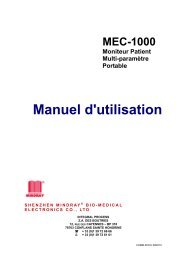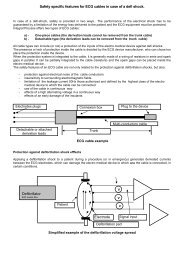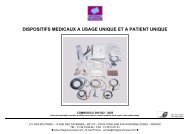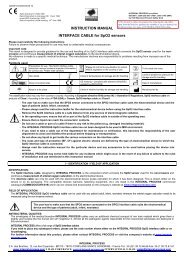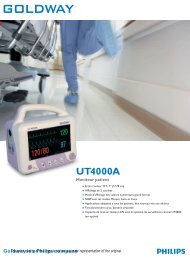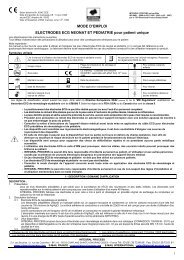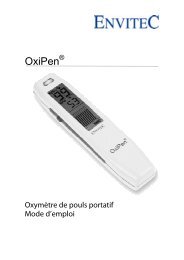TNO Finger Pressure Reference Guide - Integral Process
TNO Finger Pressure Reference Guide - Integral Process
TNO Finger Pressure Reference Guide - Integral Process
Create successful ePaper yourself
Turn your PDF publications into a flip-book with our unique Google optimized e-Paper software.
<strong>TNO</strong> <strong>Finger</strong> <strong>Pressure</strong> <strong>Reference</strong> <strong>Guide</strong> 12Plethysmogram (a.u.)300250200150100500DC-plethBeatAC-pleth200Cuff pressure150100500Time (s)Figure 2.3 Plethysmogram2.4 The pressure-diameter relationshipThe relationship between changes in arterial diameter and changes in intra-arterialpressure depends on the mechanical properties of the artery. When the artery isvery compliant (low rigidity) diameter changes are relatively large, whereasdiameter changes in stiff arteries are small. It is a well known fact that arterialcompliance depends on the transmural pressure, i.e. the pressure differencebetween the pressure inside the artery and the pressure of the surrounding tissue[LANGEWOUTERS 1986]. At high transmural pressures, when cuff pressure is low,the arterial diameter is relatively large. Therefore, the artery is distended andbecomes stiff, causing small diameter changes. When transmural pressure is low,i.e. when cuff pressure is high with respect to mean blood pressure, the artery isalmost collapsed, and diameter changes will be also small. At near zero transmuralpressure, i.e. when the pressure inside the artery equals the pressure in the fingercuff, diameter changes are largest. This observation was first published by Mareyin 1876 [MAREY 1876]. Figure 2.4 shows a stylized pressure-diameter (p-d) plot ofa finger artery measured in vitro.



